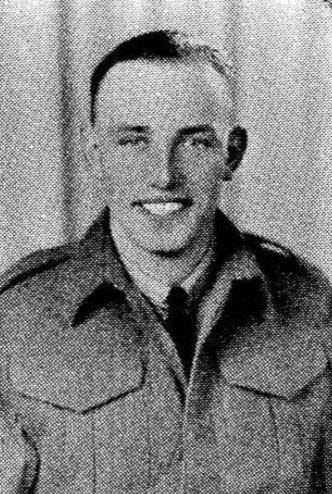By Craig Baird for The Pipestone Flyer
On Tuesday, June 6, 1944, the largest seaborne invasion in human history was conducted.
A total of 150,000 troops descended on the beaches of Normandy, including 16,000 Canadian troops. It was a watershed moment, not only in the Second World War, but in the history of the world.
It was the beginning of the end of Nazi Germany as well.
In the Wetaskiwin and Millet areas, many men signed up to fight overseas and some took part in that historic day. Let’s look at who those men were.
George Royan
In 1926, Carl and Gena Aske left their home in Monarch, Alta., and moved to a farm near Ten Mile Corner. Their daughter Josephine moved with them, along with the entire family of nine children.
Josephine would go on to move into Millet in adulthood and work for Mrs. Henry Moonen, before marrying George Royan, who at the time was employed with Bob Womacks.
In 1942, George enlisted with the Royal Canadian Engineers in 1942 and was sent overseas in 1943 to aid in the war effort. He would find himself descending on Normandy on D-Day in 1944, surviving the assault and returning home in 1946.
In 1950, the couple moved to Rimbey, where George worked as part of the town crew maintaining sidewalks, sewers and water systems. It was there he remained until he passed away in 1968. They would have three sons and two daughters.
Robert Duncan Ochsner
Born to Ernest Robert and Alice Ochsner of Bittern Lake on March 29, 1919, Robert was the only child of the couple.
Robert’s grandfather had bought the Bittern Lake Ranch from William Stoughton in 1907. The ranch became highly successful and employed many in the area.
Prior to arriving in the area, Robert’s father had founded and built Ochsner’s Brewery in Edmonton.
Attending Roseland School, Robert would help his father at the farm and was a member of the Bittern Lake hockey team in 1941. This team had won the Camrose District Cup. He was also a member of the Bittern Lake and Gwynne baseball teams.
Robert would enlist with the Royal Canadian Air Force in 1941 and go overseas to serve as a pilot officer in 1942.
While overseas, he met Roberta Duthie, a Scottish woman with the Royal Air Force Women’s Division. The couple would marry in 1944.
During the invasion of Normandy, Robert would be reported missing and eventually presumed dead.
On Feb. 10, 1945, Roberta would give birth to Adrienne. Both mother and daughter would come to Canada in 1946 to meet Robert’s parents. They would both return to Scotland in 1949.
In his memory, his parents gifted brass candlesticks to the church.
Bill Krikken
Born in Scotland and coming to the Wetaskiwin area as a young boy with his family, he would join four other members of his family in serving during the Second World War.
One brother, Bernard, did not make it back and was killed in 1943.
Bill, for his part, joined the Fort Garry Armoured Corp and he was at Normandy on D-Day. He would eventually return from the war and work on a seismograph crew out of Edmonton.
Eventually, he decided to get land near the Duhamel area and began to farm.
Some soldiers didn’t participate in D-Day or live in the area, but they had a connection to both.
One such individual was Sgt. Raymond Harold. Born in the United States in 1911, but living in Canada in Mossleigh, he was not drafted into the army, but chose to enlist on Nov. 6, 1943, with the Calgary Highlanders.
He would take his training in Wetaskiwin before being sent to Woodstock, Ont. Training in motor transport, he had his embarkation leave cut short because of the deep need for reinforcements after D-Day.
He would go overseas on June 22, 1944, and be killed while on night patrol behind German lines on Oct. 9, 1944, in Holland.
Information for this column comes from Bitter ‘n Sweet, Veterans Affairs Canada, Trails to Highways, Tales and Trails of Millet, The Battle River Country.
